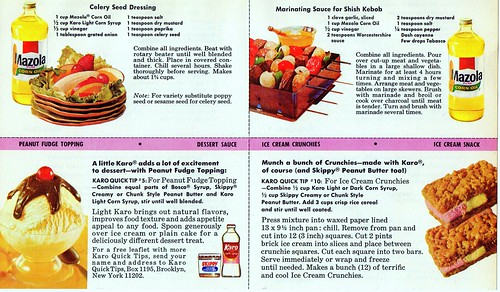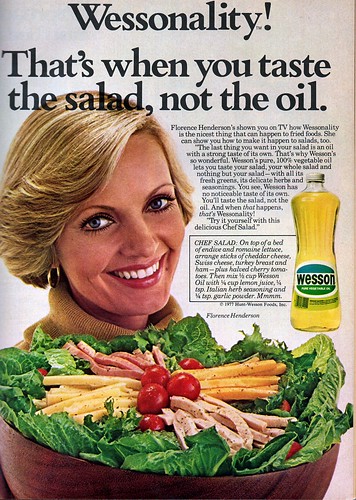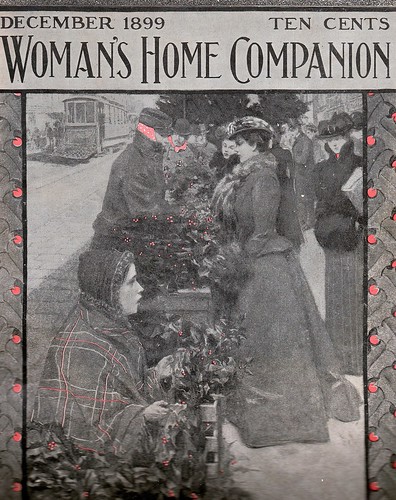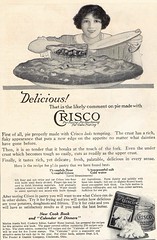Anyway, here once again are 2 competing ads for Mayonnaise and Miracle Whip.


The Miracle Whip ad doesn't really display any recipes, other than literally using it as a salad dressing. But that's okay, since I like mayonnaise better anyway. And in the mayonnaise ad, we are offered recipes for three common yet uniquely prepared dishes. The 1957 housewife could choose from Sauced Summer Squash, Shrimp Tomato Salad, and Stuffed Peppers. The last of those three is the one I will be discussing later.
But where exactly would a cook of the time be preparing our meal? Well, perhaps in a house like this one:


Pretty colorful, isn't it? This issue is full of photos for inexpensive houses, and the picture above is typical of what you'll see. (Notice that the walls can be painted in any color!) The kitchen of this house is a cool turquoise, as seen in the other photo. Unfortunately not scanned is the pink and red living/dining room and the red and black bedroom.
Finally, the summer hostess needs something to wear. This June issue was a "picnic" issue, so the fashion spread features "easy to make, exciting to wear fun clothes for lazy summer days or cool evenings when you're a guest at a cook-out on the patio or hostess at a barbecue in your own backyard." The dress here is the one I was partial to - I think it's really cute, and I only wish it was in color so I could see the grape, green and black stripes together. For just 50 cents you could send for the pattern, which would require 2 3/4 yards of fabric for a siz
 e 14. Speaking of sizes, they have really changed if the sizing chart here is any indication. Tiny measurements (31" bust, 24" waist, 33" hip) are a size 10. For comparison, I checked the sizing charts at Victoria's Secret, and that was a size 2!
e 14. Speaking of sizes, they have really changed if the sizing chart here is any indication. Tiny measurements (31" bust, 24" waist, 33" hip) are a size 10. For comparison, I checked the sizing charts at Victoria's Secret, and that was a size 2!Anyway, back to the food. I'm posting the recipe for the Hellmann's Mayonnaise stuffed peppers, only because it is a recipe I am so familiar with and have made so often, though never in this way. In fact, the recipe honestly does not sound good at all. It is so truly different from anything I've ever seen, though, that I couldn't possibly let it go without a mention. And perhaps it tastes much better than it looks in print! I don't think this is one of the recipes I'll ever try to find that out about. Nevertheless, if you want to try, here is the recipe.
Stuffed Peppers - 1957
Mix 1/3 cup Real Mayonnaise, 1 1/2 cups drained kernel corn, 1 3-oz can mushrooms, drained, 6 slices of bread, cubed, chopped onion, salt, pepper. Fill 6 parboiled pepper halves. Top with 1/3 cup dry bread crumbs mixed with 1 tablespoon Real Mayonnaise. Bake 30 minutes at 350 degrees. Serves 6.
I probably won't be posting for a few days. We are going to visit my hometown, in western Pennsylvania, where my family still lives. My mother has already promised me a vintage cookbook and a magazine from the 1940's that she found, so hopefully when I do get back I'll have lots of new things to post! See you then...







































